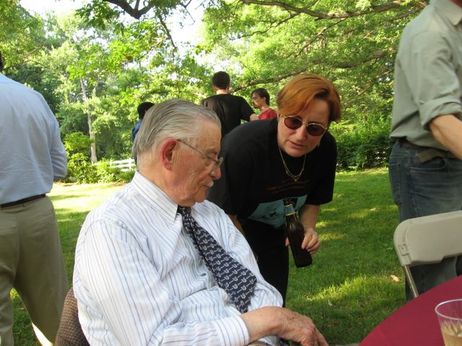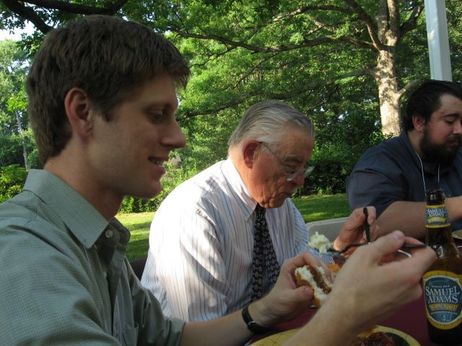 The excavation of a fort from roughly the time and place of the biblical exodus of the Israelites from Egypt. Source of photo: the online version of the NYT article cited below.
The excavation of a fort from roughly the time and place of the biblical exodus of the Israelites from Egypt. Source of photo: the online version of the NYT article cited below.
The economic theory of public choice is often viewed as having begun with Buchanan and Tullock’s The Calculus of Consent. The theory seeks to explain the behavior of government, and government officials, as arising from the same self-interested motives as are used by economists to explain the behavior of free markets, firms, and consumers.
It didn’t look like much — some ancient buried walls of a military fort and a few pieces of volcanic lava. The archaeologist, Dr. Zahi Hawass, often promotes mummies and tombs and pharaonic antiquities that command international attention and high ticket prices. But this bleak landscape, broken only by electric pylons, excited him because it provided physical evidence of stories told in hieroglyphics. It was proof of accounts from antiquity.
That prompted a reporter to ask about the Exodus, and if the new evidence was linked in any way to the story of Passover. The archaeological discoveries roughly coincided with the timing of the Israelites’ biblical flight from Egypt and the 40 years of wandering the desert in search of the Promised Land.
“Really, it’s a myth,” Dr. Hawass said of the story of the Exodus, as he stood at the foot of a wall built during what is called the New Kingdom.
. . .
Recently, diggers found evidence of lava from a volcano in the Mediterranean Sea that erupted in 1500 B.C. and is believed to have killed 35,000 people and wiped out villages in Egypt, Palestine and the Arabian Peninsula, officials here said. The same diggers found evidence of a military fort with four rectangular towers, now considered the oldest fort on the Horus military road.
But nothing was showing up that might help prove the Old Testament story of Moses and the Israelites fleeing Egypt, or wandering in the desert. Dr. Hawass said he was not surprised, given the lack of archaeological evidence to date. But even scientists can find room to hold on to beliefs.
Dr. Mohamed Abdel-Maqsoud, the head of the excavation, seemed to sense that such a conclusion might disappoint some. People always have doubts until something is discovered to confirm it, he noted.
Then he offered another theory, one that he said he drew from modern Egypt.
“A pharaoh drowned and a whole army was killed,” he said recounting the portion of the story that holds that God parted the Red Sea to allow the Israelites to escape, then closed the waters on the pursuing army.
“This is a crisis for Egypt, and Egyptians do not document their crises.”
For the full story, see:
MICHAEL SLACKMAN. "North Sinai Journal Did the Red Sea Part? No Evidence, Archaeologists Say." The New York Times (Tues., April 3, 2007): A4.
(Note: ellipsis added.)
 A female skelaton buried near the fort (above). Source of photo: the online version of the NYT article cited above.
A female skelaton buried near the fort (above). Source of photo: the online version of the NYT article cited above.
 Sandy Peart talking to James Buchanan. Source of photo: me.
Sandy Peart talking to James Buchanan. Source of photo: me. 


